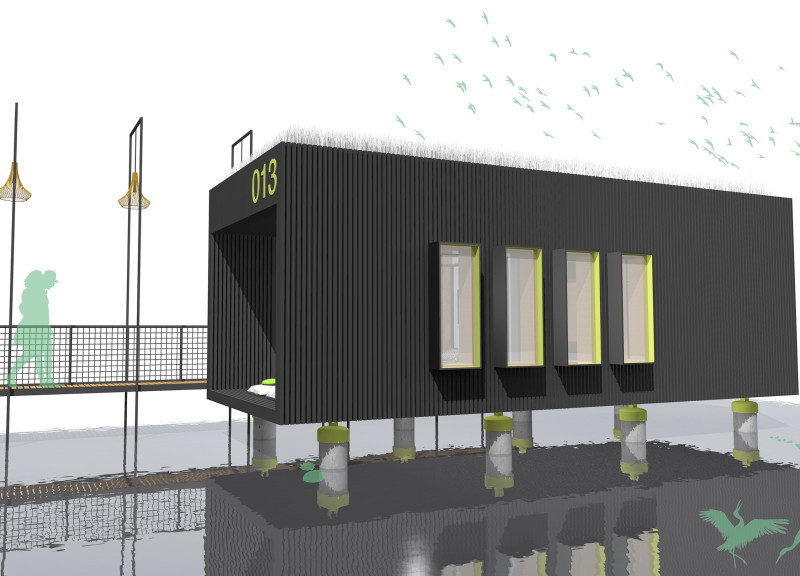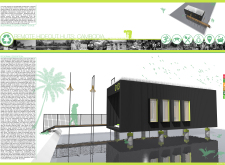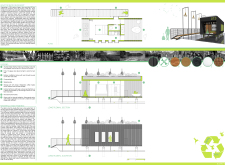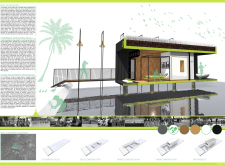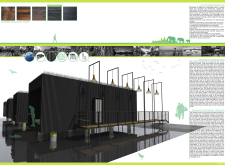5 key facts about this project
The Remote Hideout Huts in Cambodia offer a thoughtful approach to design that focuses on eco-tourism and community engagement. Set against a backdrop of vibrant rice paddies, the cabins provide a place for guests to connect with nature. The design emphasizes practicality while ensuring that the structure fits well within its surroundings.
Design Concept and Layout
The overall layout features an enclosed cabin with two open terraces. One terrace is intended for meditation and yoga, while the other serves as a bathroom area. This division of space allows for privacy and effectively supports the activities of guests seeking a peaceful retreat. Elevated above the fields, the cabins provide a sense of isolation without taking away from the functional farmland.
Access and Experience
Visitors approach the huts via a bridge leading from the main road. This pathway enhances the journey into the tranquil environment. The bridge is designed to be inviting, with lights that illuminate the way at night. At its end, a seating area offers views of the rice fields, encouraging occupants to take in the calming scenery as part of their experience.
Materiality and Sustainability
Sustainable design is reflected in the materials used. The exterior of the cabins is made from wood treated with the Shou Sugi Ban method. This technique not only enhances the wood’s durability but also protects it from moisture and insects. Inside, bamboo is prominently featured, providing a warm and natural feel. A green roof further supports the building’s sustainability, enhancing insulation and blending in with the landscape.
Spatial Dynamics
The interior design emphasizes a sense of movement, aided by sliding doors that connect different areas. The bathroom is unique as it is designed as an exterior space, consisting of a bathtub, basin, and shower, with louvers for added privacy. These elements allow natural light and fresh air to enter the space, enhancing the indoor-outdoor experience.
In the sleeping area, large glass French doors invite views of the rice paddies. This design keeps occupants engaged with the surrounding landscape, making the connection to nature a central aspect of their stay. The overall experience is one of comfort and calmness, encouraging visitors to relax and appreciate their environment.


